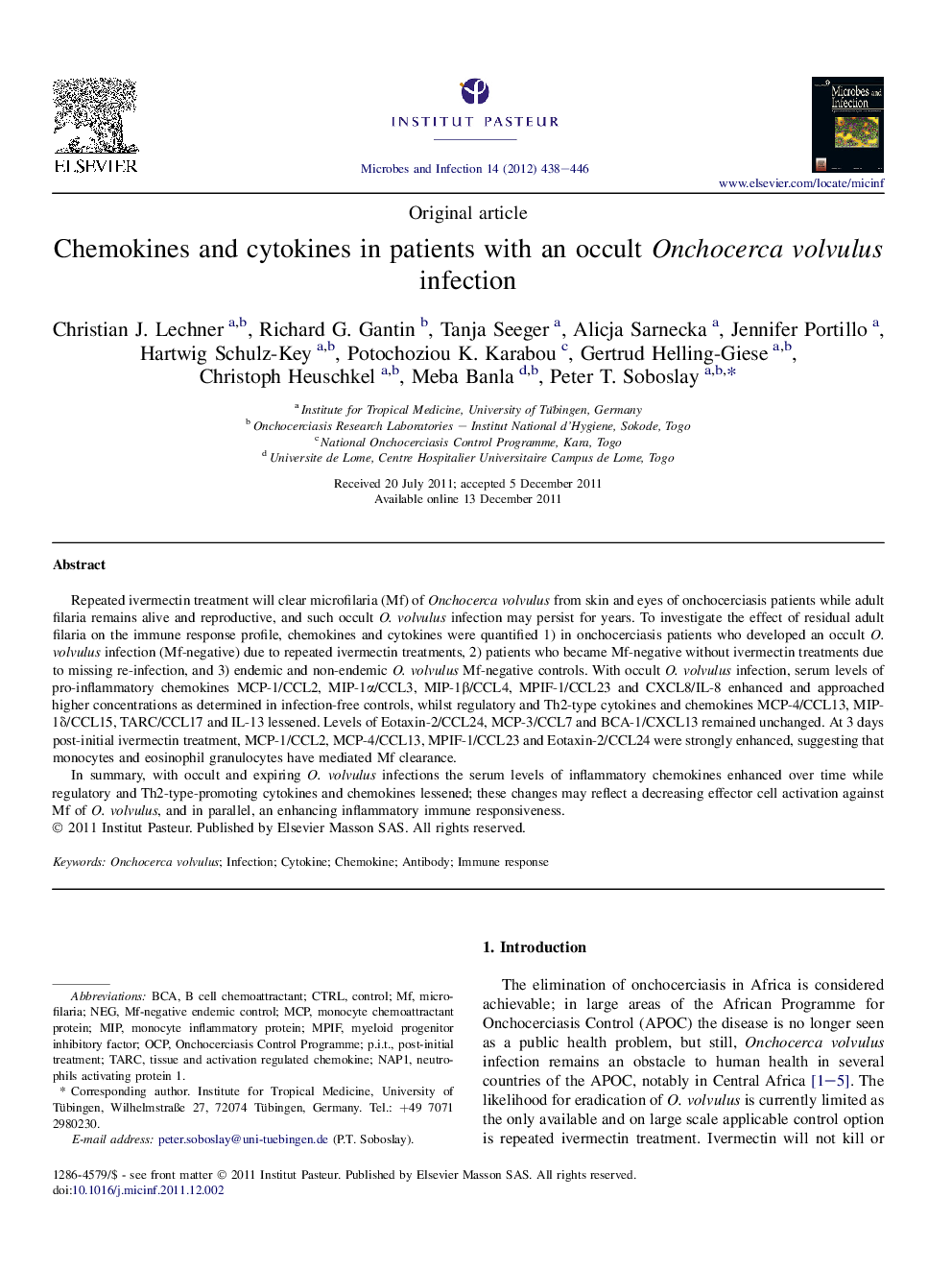| Article ID | Journal | Published Year | Pages | File Type |
|---|---|---|---|---|
| 3415027 | Microbes and Infection | 2012 | 9 Pages |
Repeated ivermectin treatment will clear microfilaria (Mf) of Onchocerca volvulus from skin and eyes of onchocerciasis patients while adult filaria remains alive and reproductive, and such occult O. volvulus infection may persist for years. To investigate the effect of residual adult filaria on the immune response profile, chemokines and cytokines were quantified 1) in onchocerciasis patients who developed an occult O. volvulus infection (Mf-negative) due to repeated ivermectin treatments, 2) patients who became Mf-negative without ivermectin treatments due to missing re-infection, and 3) endemic and non-endemic O. volvulus Mf-negative controls. With occult O. volvulus infection, serum levels of pro-inflammatory chemokines MCP-1/CCL2, MIP-1α/CCL3, MIP-1β/CCL4, MPIF-1/CCL23 and CXCL8/IL-8 enhanced and approached higher concentrations as determined in infection-free controls, whilst regulatory and Th2-type cytokines and chemokines MCP-4/CCL13, MIP-1δ/CCL15, TARC/CCL17 and IL-13 lessened. Levels of Eotaxin-2/CCL24, MCP-3/CCL7 and BCA-1/CXCL13 remained unchanged. At 3 days post-initial ivermectin treatment, MCP-1/CCL2, MCP-4/CCL13, MPIF-1/CCL23 and Eotaxin-2/CCL24 were strongly enhanced, suggesting that monocytes and eosinophil granulocytes have mediated Mf clearance.In summary, with occult and expiring O. volvulus infections the serum levels of inflammatory chemokines enhanced over time while regulatory and Th2-type-promoting cytokines and chemokines lessened; these changes may reflect a decreasing effector cell activation against Mf of O. volvulus, and in parallel, an enhancing inflammatory immune responsiveness.
